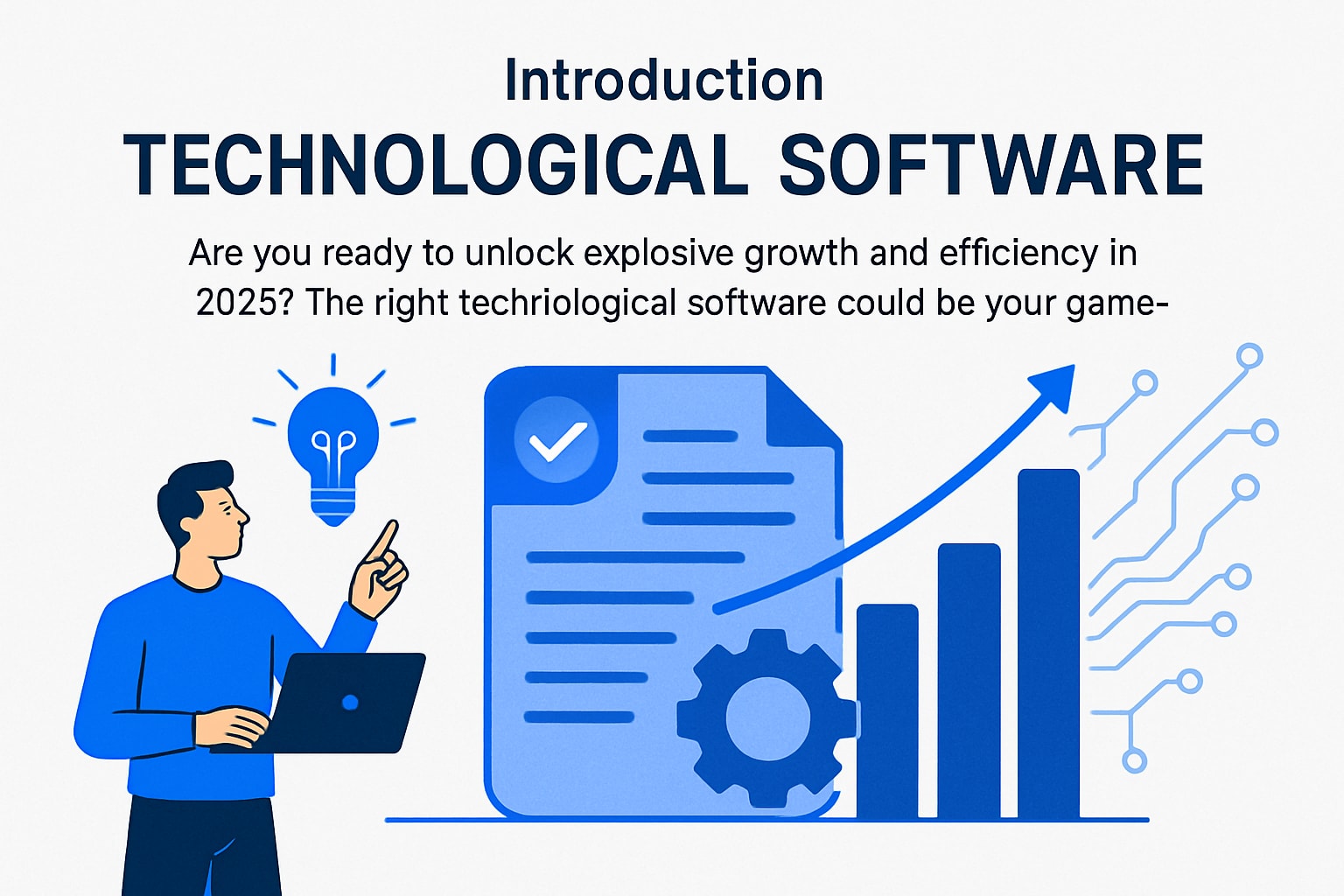Are you ready to unlock explosive growth and efficiency in 2025? The right tools can set your business apart in a rapidly changing world.
This guide will break down the evolving landscape of technological software, giving you clear strategies and practical insights for a successful year ahead. Whether you’re a business leader, entrepreneur, or IT professional, you’ll find the direction you need to choose and implement the most impactful solutions.
We’ll explore emerging trends, vital software categories, step-by-step adoption strategies, selection criteria, integration tips, and future-proofing techniques. Take the first step and start mapping your technological software success journey today.
The Technological Software Landscape in 2025
The technological software landscape in 2025 is shifting at lightning speed, promising new opportunities for business leaders and IT professionals. Staying ahead means understanding not only the latest software, but also how these tools fit into your overall strategy. Let’s explore what’s shaping the future of technological software and how you can harness its full potential.
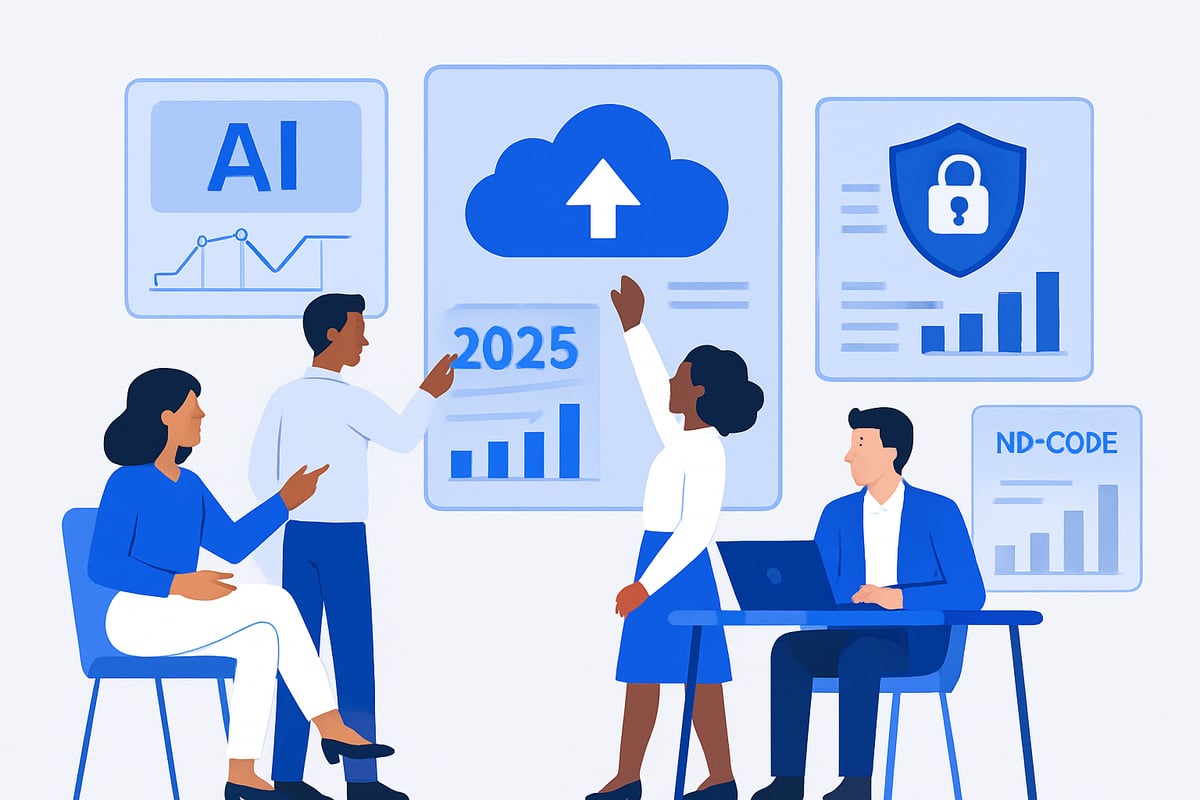
Key Trends Shaping the Software Industry
Several trends are defining technological software in 2025. AI-driven and automation platforms are at the forefront, powering smarter processes and insights. The no-code and low-code revolution is making software creation accessible to everyone, even those without technical backgrounds. Cybersecurity and data privacy are now top priorities as threats become more sophisticated. Companies increasingly rely on cloud-native and hybrid solutions for flexibility and scalability. Finally, interoperability and robust API ecosystems ensure that different systems can seamlessly work together, driving efficiency and innovation within technological software.
Major Software Categories and Their Business Impact
Technological software spans multiple categories that directly impact business outcomes. Productivity and collaboration tools support remote work and project management, helping teams connect and deliver results. CRM platforms centralize customer data and streamline sales processes. ERP systems integrate finance, HR, and supply chain operations for holistic management. Industry-specific solutions address unique needs in sectors like healthcare or fintech, while data analytics and BI tools turn information into actionable insights. See the table below for a summary:
| Category | Business Impact |
|---|---|
| Productivity & Collaboration | Boosts efficiency, teamwork |
| CRM Platforms | Enhances customer engagement |
| ERP Systems | Streamlines operations |
| Industry-Specific Software | Solves sector challenges |
| Data Analytics & BI Tools | Drives informed decisions |
These categories form the backbone of effective technological software strategies.
The Role of AI and Automation in Modern Software
AI and automation are transforming technological software by embedding intelligence into everyday business processes. Machine learning algorithms help companies make smarter, data-driven decisions. Automation handles repetitive tasks, freeing up employees for higher-value work. AI-powered chatbots offer personalized customer support around the clock, while workflow automation tools keep operations running smoothly. Predictive analytics provide foresight into trends and risks, giving businesses a competitive edge. As AI becomes more accessible, it is rapidly becoming a cornerstone of technological software for organizations of all sizes.
No-Code and Low-Code Platforms: Accelerating Innovation
No-code and low-code platforms are democratizing technological software development, empowering non-developers to build robust applications quickly. These platforms enable rapid prototyping and MVP launches, reducing both cost and time-to-market. Businesses can now respond to market shifts with agility, experimenting and iterating without waiting on traditional IT cycles. Popular platforms like Bubble, OutSystems, and Mendix are leading this charge. To understand why this trend is revolutionizing the industry, explore the future of no-code development. Embracing no-code tools helps organizations scale innovation within their technological software stack.
Security, Compliance, and Data Privacy Considerations
Security and compliance are critical elements of any technological software strategy in 2025. With regulations such as GDPR and CCPA tightening, businesses must prioritize built-in security features. Encryption, access controls, and audit trails are now non-negotiable for safeguarding sensitive data. Regular security audits and proactive vulnerability assessments are essential. According to Gartner, 68% of businesses cite security as their top concern with new software. By focusing on compliance and privacy, organizations can confidently leverage technological software to drive growth while protecting their assets.
Steps to Building Your Technological Software Roadmap
Building a robust technological software roadmap is essential for future-ready organizations. Each step helps you align your tools with your business vision, ensuring that every investment moves you closer to your 2025 goals. Let’s break down the process into clear, actionable steps.
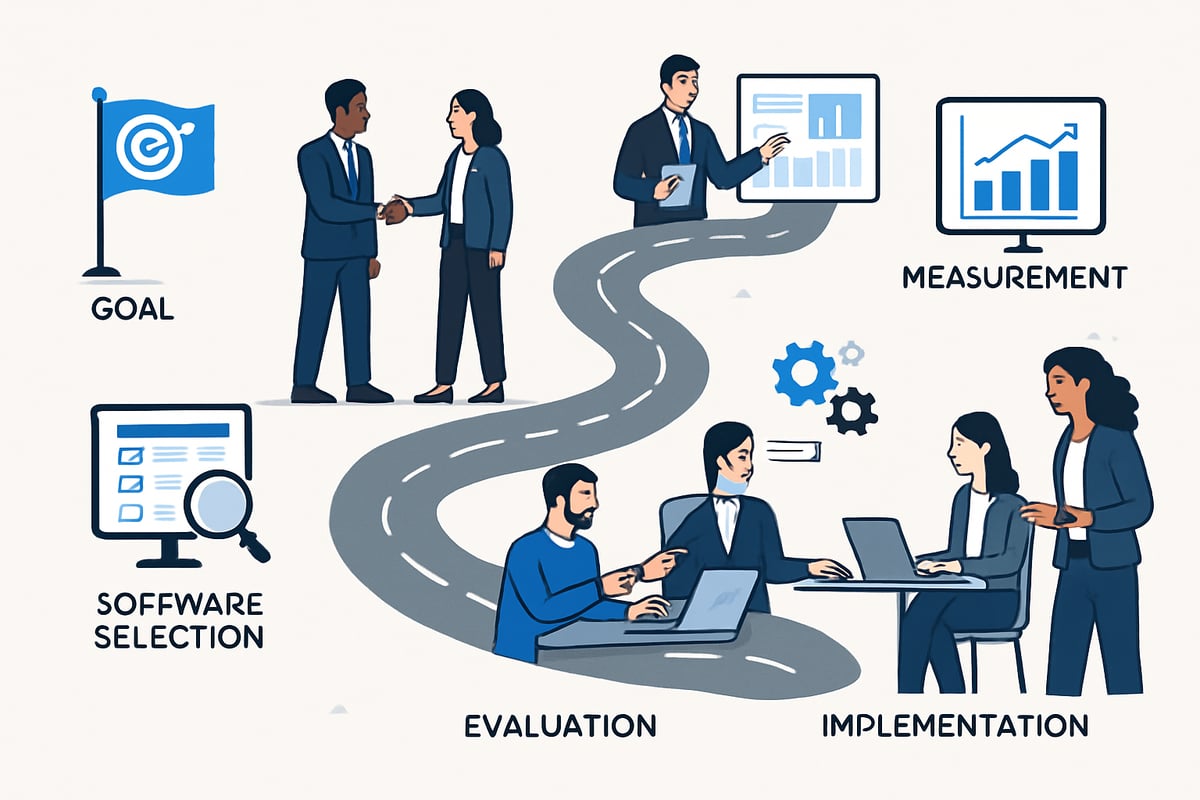
Assessing Your Business Needs and Goals
Start by conducting a comprehensive digital audit. Review your current workflows, software stack, and data infrastructure. Identify pain points where technological software can deliver the most value.
Engage stakeholders from every department to capture a 360-degree view. Ask questions like: Where are the bottlenecks? Which manual tasks could be automated? What are your growth targets for 2025?
Align your technological software investments with your core business objectives. When everyone is involved in the assessment, you set the stage for seamless adoption and long-term success.
Researching and Shortlisting Solutions
With needs defined, gather detailed requirements and create a features wishlist. Compare available technological software options by reviewing peer recommendations, industry benchmarks, and analyst reports.
Use comparison tools to evaluate functionalities side by side. For deeper insights, consult resources like the Essential software guide 2025 to stay updated on best practices and trends.
Shortlist solutions that fit your budget, integrate with existing systems, and have strong user reviews. This structured approach ensures you only consider the most relevant technological software for your business.
Evaluating Vendors and Platforms
Request demos and trial access to shortlisted technological software platforms. Evaluate scalability to ensure the solution grows with your business. Assess integration capabilities, customer support quality, and the flexibility of pricing models.
Check vendor track records by reading customer testimonials and case studies. Compare subscription, license, and custom pricing to find the best fit. Detailed evaluation now saves you from costly migrations later.
A systematic review of each vendor helps you avoid surprises and builds confidence in your final selection.
Planning Implementation and Change Management
Lay out a clear implementation plan with defined timelines and milestones. Assign internal champions to drive the technological software rollout and act as points of contact for their teams.
Prepare robust training programs and onboarding resources. Address concerns early to reduce resistance and foster buy-in. Use regular updates and feedback loops to keep everyone engaged.
Effective change management ensures your technological software investments deliver value from day one and keeps teams motivated throughout the transition.
Measuring Success and Iterating
Define key performance indicators (KPIs) to measure the impact of your technological software. Track metrics like ROI, productivity gains, and user satisfaction.
Gather feedback from end-users and monitor performance data. Use these insights to fine-tune your software stack, address gaps, and implement improvements.
Continuous improvement cycles help you adapt to evolving business needs and maximize the benefits of your technological software over time.
Essential Software Solutions for 2025 Success
The world of technological software is evolving rapidly, and 2025 will be a pivotal year for businesses seeking new heights. Selecting the right solutions can transform team productivity, customer satisfaction, and business agility. Here, we explore the essential categories that every forward-thinking organization should consider for a robust technological software stack.
Productivity and Collaboration Tools
Streamlined teamwork is the foundation of business success. Technological software in this category empowers teams to coordinate projects, communicate in real time, and share documents securely.
Popular platforms like Asana and Monday.com bring clarity to project management. Slack and Microsoft Teams foster instant collaboration, while Google Workspace enables seamless document co-editing.
According to recent surveys, 85% of organizations report improved efficiency after adopting these tools. By integrating productivity software into your technological software ecosystem, you can minimize miscommunication and boost overall output.
Customer Relationship Management (CRM) Systems
CRM solutions are vital for centralizing customer data, tracking interactions, and automating routine sales tasks. With technological software like Salesforce, HubSpot, and Zoho CRM, businesses can personalize marketing campaigns and map the entire customer journey.
These platforms use automation to nurture leads and streamline follow-ups. The result is stronger relationships and better customer retention. Choosing the right CRM as part of your technological software strategy leads to measurable growth in customer satisfaction.
Enterprise Resource Planning (ERP) Platforms
ERP systems unify various business functions, from finance and HR to supply chain management. Technological software such as SAP S/4HANA and Oracle NetSuite offers real-time analytics and scalable architectures.
By consolidating data across departments, ERP platforms help organizations make faster, data-driven decisions. For growing businesses, adopting ERP technological software means fewer silos and improved operational visibility.
Data Analytics and Business Intelligence (BI) Tools
Turning raw data into actionable insights is critical for staying competitive in 2025. Technological software like Power BI, Tableau, and Looker enables leaders to build self-service dashboards and leverage predictive analytics.
These tools empower decision-makers to spot trends, forecast outcomes, and optimize strategies. Integrating BI software into your technological software framework ensures you are making informed, evidence-based choices.
Industry-Specific Software Solutions
Different sectors demand specialized technological software tailored to unique workflows. In healthcare, EHR systems and telemedicine platforms like Epic enhance patient care. Retailers rely on POS and inventory management tools such as Lightspeed, while manufacturers turn to IoT-enabled production monitoring.
Selecting industry-focused technological software lets you address regulatory requirements and operational challenges with precision, ensuring every department thrives.
No-Code and Low-Code Development Platforms
Innovation is accelerating, thanks to no-code and low-code technological software. Platforms like Bubble, OutSystems, and Airtable empower users to build apps without traditional programming.
Rapid prototyping and MVP validation are now accessible to non-developers, reducing IT bottlenecks. By adopting these platforms, businesses can quickly test ideas, respond to market needs, and keep their technological software ecosystem agile.
Big House Technologies: No-Code & AI Solutions for 2025
Big House Technologies stands out as a leader in no-code and AI-driven software development. Specializing in scalable, cost-effective solutions for startups and enterprises, they leverage Bubble for no-code builds and Lovable for AI integrations.
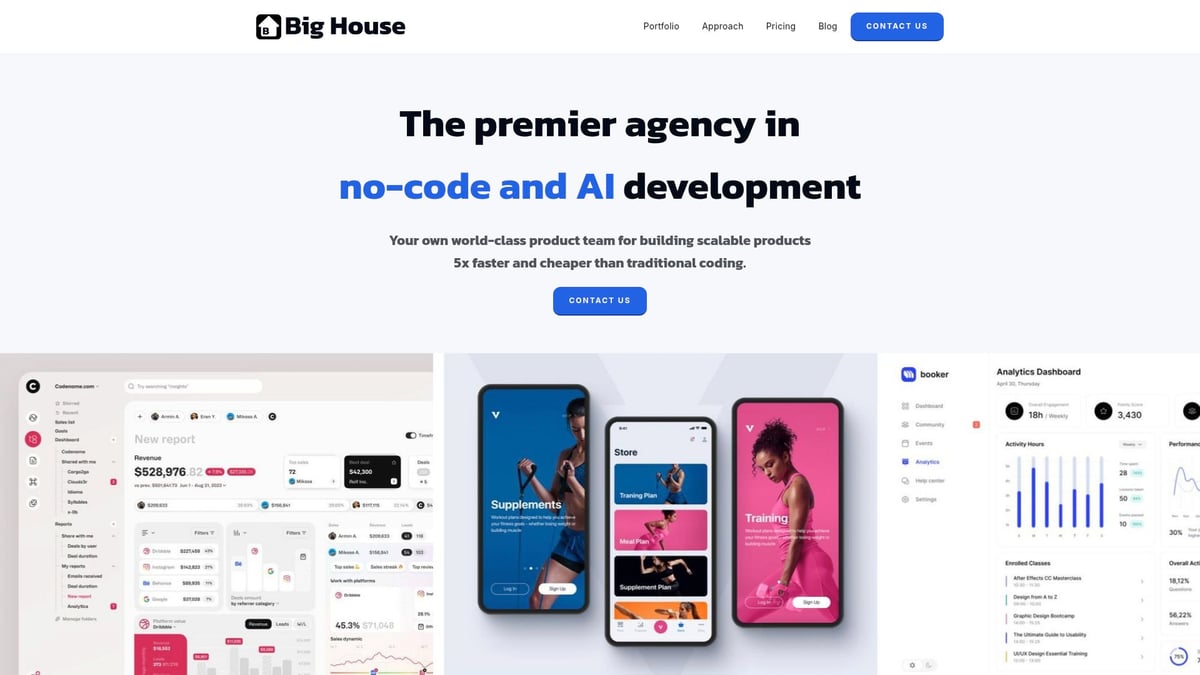
Their end-to-end service covers scoping, design, development, testing, and launch. Clients benefit from up to 5x faster delivery and 3-4x cost savings, with proven multimillion-euro ROI. Flexible pricing plans make their technological software services accessible for diverse business needs. For organizations seeking rapid digital transformation in 2025, Big House Technologies is an ideal partner.
Best Practices for Integrating and Managing Technological Software
Integrating and managing technological software in 2025 requires a strategic approach that balances innovation with reliability. The right practices help you unlock the full potential of your software stack while minimizing disruption. Let’s explore how to make your technological software journey seamless from integration to ongoing improvement.
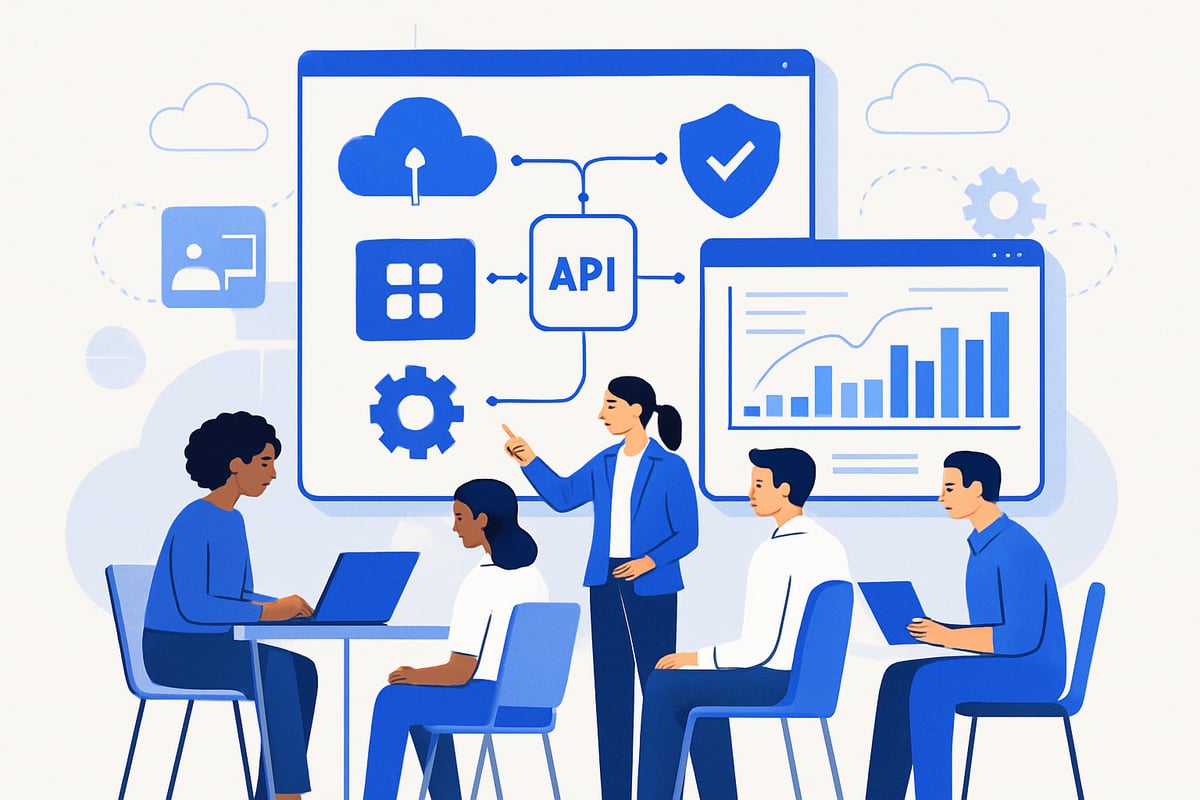
Seamless Integration with Existing Systems
Successful integration begins with selecting technological software that prioritizes open APIs and robust interoperability. This ensures your new tools communicate effortlessly with your legacy systems.
- Assess data migration needs early to avoid compatibility issues.
- Map dependencies and test integrations in a sandbox environment.
- Plan for phased rollouts to reduce operational downtime.
According to IDC, 72% of enterprises now prioritize integration capabilities when choosing technological software. Leveraging AI tools for coding and automation can further streamline integration, accelerate workflows, and reduce manual errors.
Ensuring User Adoption and Training
No matter how advanced your technological software is, user adoption is the linchpin of success. Design intuitive user experiences with clear navigation and role-based access.
- Offer comprehensive onboarding sessions for all users.
- Provide ongoing learning through workshops and digital resources.
- Incentivize adoption with recognition programs or gamification.
Role-based training programs have proven to boost technological software adoption rates. Gathering regular feedback ensures your team feels empowered and supported during transitions.
Ongoing Maintenance, Support, and Updates
Technological software requires proactive maintenance to keep systems secure and efficient. Schedule routine software updates, patches, and performance checks.
- Monitor uptime and critical system metrics.
- Establish clear escalation paths for support issues.
- Maintain strong relationships with vendors for timely assistance.
Businesses that invest in regular maintenance of their technological software experience 40% fewer outages. Automation tools also help streamline repetitive upkeep tasks, freeing IT teams to focus on strategic initiatives.
Data Security and Compliance Management
Security is non-negotiable in today’s technological software environment. Implement strong access controls, data encryption, and regular security audits to mitigate risks.
- Stay updated with regulations like GDPR and CCPA.
- Conduct vulnerability assessments quarterly.
- Document compliance processes for transparency.
A notable 60% of breaches stem from outdated software. Modern low-code platforms, like those featured in 12 Enterprise Low-Code Platforms, emphasize built-in security and privacy, making compliance easier without sacrificing agility.
Measuring ROI and Continuous Improvement
To maximize the value of your technological software, track key performance indicators that reflect both business impact and user satisfaction.
- Monitor usage analytics and business outcomes.
- Gather feedback for iterative improvements.
- Benchmark against industry standards to stay competitive.
Companies optimizing their technological software processes report up to 25% higher profitability. Continuous improvement cycles ensure your software investment evolves with your business needs and market changes.
Future-Proofing Your Software Strategy for 2025 and Beyond
Staying competitive in 2025 means future-proofing your technological software approach. The right strategy ensures ongoing adaptability, resilience, and growth. Let’s explore how to make your software investments stand the test of time.
Embracing Emerging Technologies
Emerging technologies are rewriting the rules for technological software. Artificial intelligence, machine learning, and automation are now at the core of business transformation. Companies are deploying AI-powered solutions to optimize workflows, personalize customer experiences, and make data-driven decisions.
For example, the OutSystems' Agent Workbench launch showcases how AI-driven agentic platforms are streamlining operations and setting new standards for efficiency. Forward-thinking organizations are also exploring blockchain for secure transactions, IoT for real-time monitoring, and edge computing for faster data processing.
Staying ahead means being proactive—invest in pilots, attend tech conferences, and encourage your teams to experiment with the latest technological software.
Building Scalable and Flexible Architectures
Your technological software architecture must be prepared for both current needs and future growth. Modern approaches like modular design, API-first development, and microservices make it easier to add features or scale up as your business expands.
Let’s compare common architecture types:
| Architecture | Flexibility | Scalability | Best For |
|---|---|---|---|
| Monolithic | Low | Limited | Small businesses |
| Microservices | High | Excellent | Rapid growth |
| API-First | High | High | Integration focus |
| Hybrid/Cloud | Medium | High | Mixed environments |
Choosing between on-premises, cloud-native, or hybrid models depends on your security needs and long-term vision. The right foundation for technological software allows you to pivot quickly as markets shift.
Developing a Culture of Continuous Learning and Adaptation
Technological software evolves rapidly, so your team’s skills must keep pace. Encourage experimentation, foster digital literacy, and reward curiosity. Offer regular training and upskilling programs so employees can leverage new tools and features.
Leadership plays a key role here. Set the tone by supporting learning initiatives and providing resources for growth. When everyone is empowered to adapt, your organization stays agile and ready for change.
Continuous improvement is not a trend—it’s a necessity for maximizing the value of technological software investments.
Vendor Partnerships and Ecosystem Collaboration
Success in 2025 hinges on strong vendor relationships and ecosystem participation. Strategic alliances enable faster innovation, while robust API ecosystems ensure seamless integration of diverse solutions.
The recent Creatio's $200M Funding Round highlights the expanding importance of interoperability and collaborative platforms in technological software. Evaluate vendor roadmaps, join developer communities, and seek out partnerships that align with your long-term goals.
Collaboration unlocks new features and reduces the risk of vendor lock-in, keeping your technological software stack flexible.
Monitoring Trends and Anticipating Disruption
Future-proofing means staying vigilant. Regularly review industry reports, set up internal innovation teams, and monitor global tech trends. Companies with dedicated innovation taskforces adapt to market changes twice as fast, according to Accenture.
Use dashboards to track KPIs, benchmark against competitors, and adjust your technological software strategy as needed. By anticipating disruption, you position your business to seize new opportunities and avoid costly setbacks.
You’ve just explored the key trends and practical steps to build a winning software roadmap for 2025—so what’s next? If you’re inspired to turn your vision into a real product, why wait months for results? Imagine validating your idea, gathering feedback, and gaining traction faster than you ever thought possible. With no-code tools and expert guidance, you can bring your MVP to life in record time—without sacrificing quality or breaking the bank. Ready to take the first step toward success in the new year? Launch Your MVP in Weeks, Not Months




About Big House
Big House is committed to 1) developing robust internal tools for enterprises, and 2) crafting minimum viable products (MVPs) that help startups and entrepreneurs bring their visions to life.
If you'd like to explore how we can build technology for you, get in touch. We'd be excited to discuss what you have in mind.
Other Articles
Discover everything beginners need to know about software designers in 2025. Learn roles, skills, tools, and career tips to start your design journey today.
Explore the key differences between Freemium, Free-Trial, and Hybrid pricing models for SaaS. Learn how each strategy impacts user acquisition, retention, and conversions to optimize growth and revenue.
Discover the best artificial intelligence app picks for 2025 Explore top AI apps transforming productivity creativity and business with key features and expert tips

